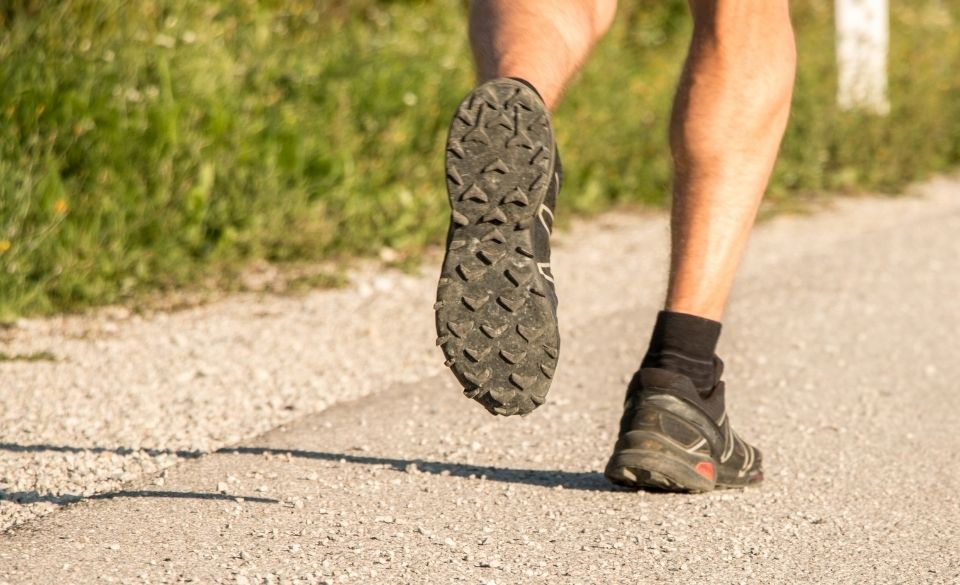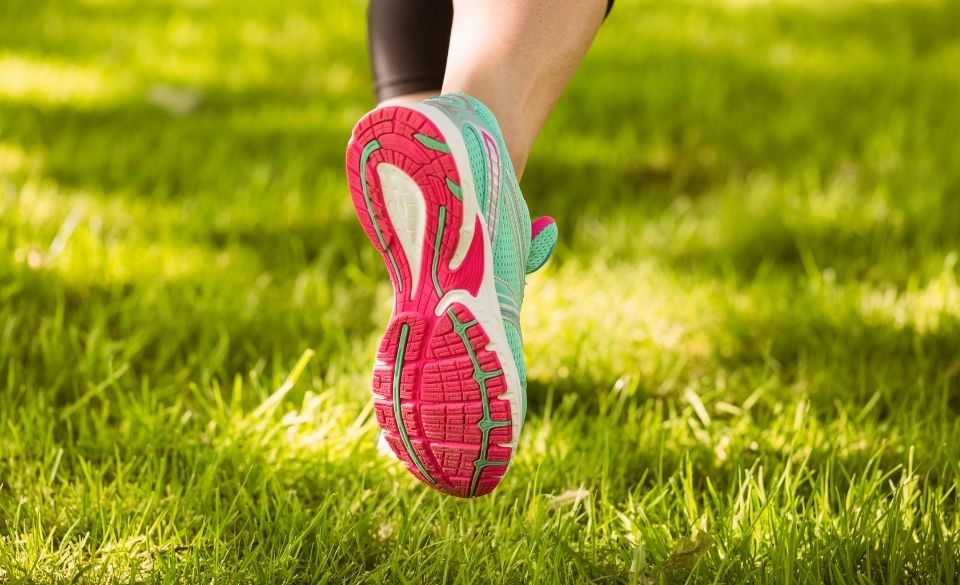
Running on Concrete vs Asphalt- Disadvantages of Running on Road
Page Contents
Although told to run on softer surfaces, living in a large metropolitan area doesn’t always give us the option to run off-road. So what is the best surface to run on that is not grass or dirt.
In this article, we debate which surface is better and the differences between concrete vs asphalt. We also discuss the disadvantages of running on the road. As well as:
– Is concrete bad for knees when running?
– Running on Concrete vs Asphalt Myth.
– What are the disadvantages of Running on Road vs Off-road?
– Differences of running on Concrete vs Grass
So, continue reading to find out more.

Is Running on Concrete Bad for Knees? What You Should know!
There are plenty of surfaces to run on. However, many of us live in an urban environment and don’t get many options. So we spend most of our time running on concrete and asphalt.
Since this is the case, many people ask the question. Is running on concrete bad for knees? And is it bad for joints?
The short answer is yes. However, this is highly debatable. You see when you land each stride on a hard surface, the energy is reflected up into the shins, knees, and hips.
However, in the past 10 or so years running shoe manufacturers have been able to prevent a lot of this force from being reflected into the body.
But this doesn’t mean that running on concrete is better for your knees than other surfaces. Running on concrete (even with improved cushioning in running shoes) applies about 20% more stress up through the legs and hips than running off-road (Here is a study measuring the impact of different running surfaces).
That means the more you run on concrete the more likely you are to develop knee pain.
Luckily there are some positives to running on concrete. Since the surface is usually smooth, your knee is likely to stay more stable through the running gait, than running off-road. This is means pronation, rotation of the knee, and sharp twists or movements are reduced by running on the road.
Although less force is sent back up through the body when running off-road, you are more prone to slipping, rolling an ankle, or tearing a muscle.
However, the best benefit for the runner is to run on both concrete and trails. This way you can help strengthen the knees, ankles, and hips. Then run on concrete (a smooth surface) for recovery.

Running on Concrete vs Asphalt Myth
Since we are in the discussion of running surfaces, there has been a myth that has been floating around the internet for years. And that is the running on concrete vs asphalt myth.
Many people think that asphalt is much softer on the knees and body than concrete. While it is technically a softer compound, you will find that the difference between running on concrete vs asphalt is not that much different.
For the elite runner running more than 100 miles a week, there may be a slight benefit to running on asphalt vs concrete.
However, for the average person, you won’t see a benefit from running on asphalt 2-3 times a week.
Both forms of the road surface are much harder than grass, dirt, or trails and if the running surface is important to you, stick to a mixture of on-road and off-road running.
Disadvantages of Running on Road vs Off-road
As we have talked about in this article, there are some disadvantages of running on road vs off-road. Some of these include:
– Lack of cushioning from the surface (both concrete and asphalt).
– Increase energy absorbed by bones, muscles, and tendons.
– Lack of variation of foot strike.
– Repetitive landing position of the foot.
While you are naturally faster on the road than off-road, muscular fatigue is much higher on-road vs offroad. This is mainly due to the impact the body needs to absorb and the lack of variation in landing and movement in the body. This results in overworked muscles, from a constant repetitive motion.

Running on Concrete vs Grass – What’s The Difference?
Running on concrete vs grass is much different from comparing concrete to running off-road. This is largely due to the smoothness of a grass field or track.
Because grass is much softer than concrete, it can provide the same benefits as a smooth surface but without the impact associated with it. That means running on grass is a great benefit if you are returning from a stress fracture, muscular injury, or tired and sore legs.
However, there is a downside. Running on grass vs concrete will often make you slower. Grass has been widely known to slow your running speed down and provide a much less efficient surface to run on. So, if you are wanting to improve your speed, try to mix both grass and concrete surfaces into your training.
Conclusion
If you are struggling with injuries such as stress fractures, shin splints, or regular soreness, you are most likely training too much. You also may be in the wrong type of shoe if you are constantly experiencing soreness from running.
Try to purchase a pair of running shoes that provide a higher level of cushioning. Alternatively, try wearing a slightly more padded running sock. Both can help reduce the impact traveling up into the body when landing.
If you are still struggling with soreness after running, try mixing grass, dirt trails, and concrete into your long runs. This way you can reduce some of the muscular fatigue felt during the long run.
Alternatively, contact a running coach. They can help see if running surfaces play a role in muscle soreness, injuries, or fatigue. And if so, adjust your schedule to combat this.


